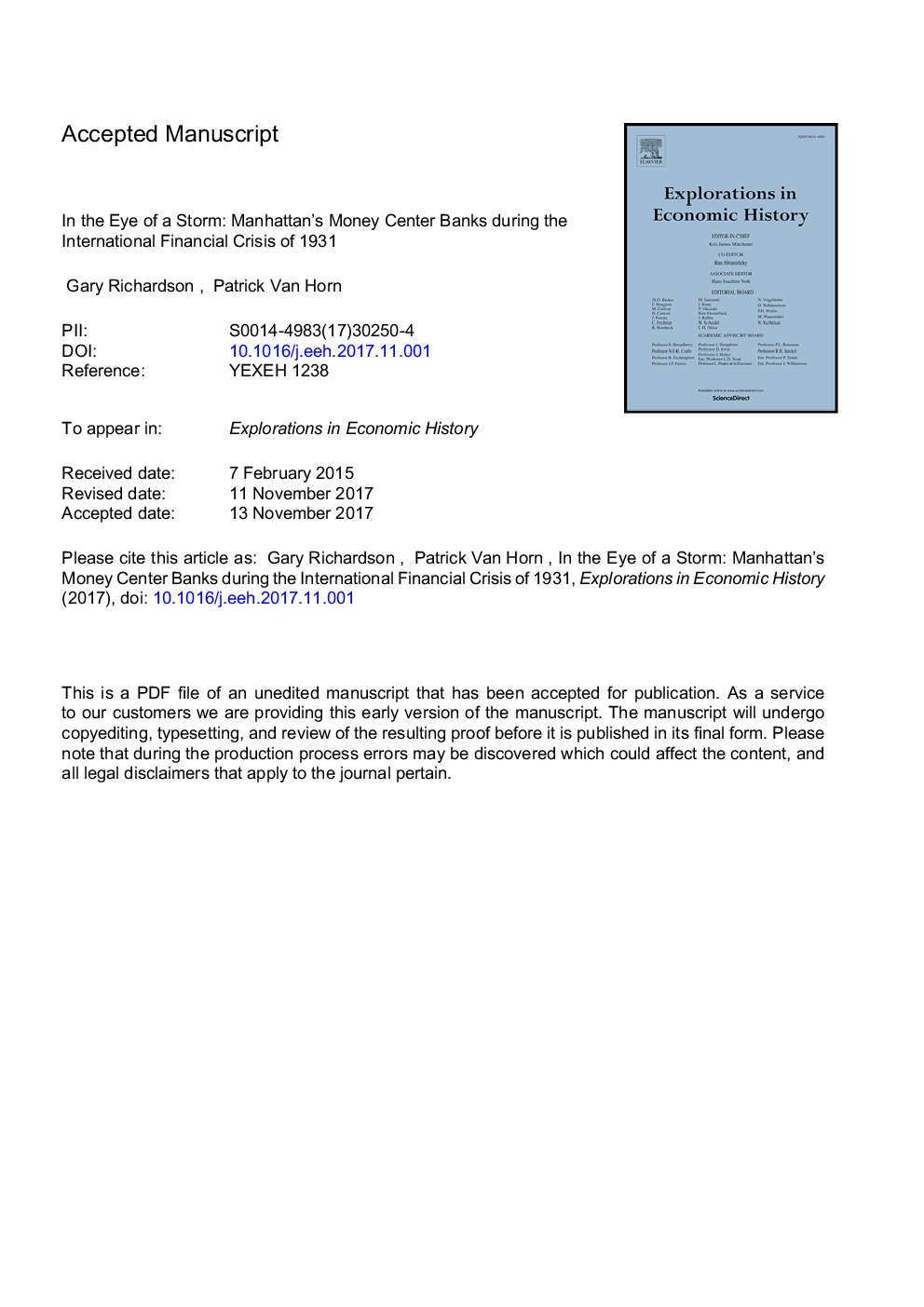| Article ID | Journal | Published Year | Pages | File Type |
|---|---|---|---|---|
| 7351886 | Explorations in Economic History | 2018 | 68 Pages |
Abstract
In the summer of 1931, a financial crisis began in Austria, spread to Germany, forced Britain to abandon the gold standard, crossed the Atlantic, and afflicted financial institutions in the United States. This article describes how banks in New York City, the central money market of the United States, reacted to this trans-Atlantic trauma. New York's money-center banks anticipated the onset of a financial crisis, prepared for it by accumulating substantial reserves, and during the European crisis, continued business as usual. New York's leading bankers deliberately and collectively decided on the business-as-usual policy in order to minimize the impact of the panic in the United States. New York banks' behavior changed only after the Federal Reserve raised discount rates to stem gold outflows in the fall of 1931.
Related Topics
Social Sciences and Humanities
Arts and Humanities
History
Authors
Gary Richardson, Patrick Van Horn,
